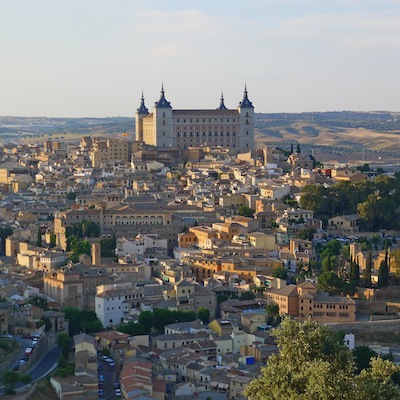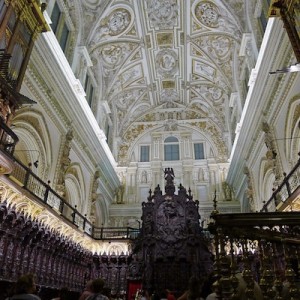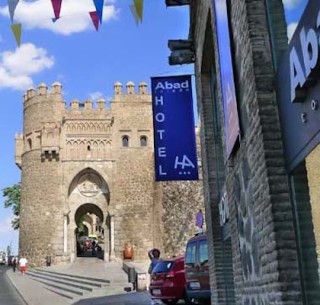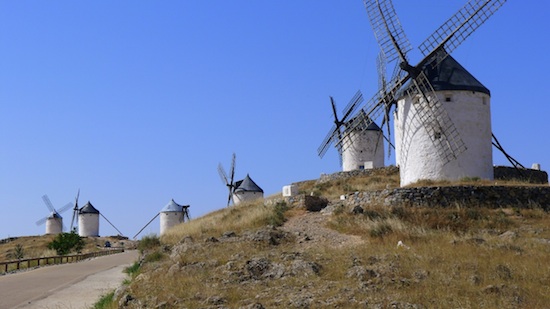

Am I really in Spain, exploring ancient synagogues, staying in Jewish-branded hotels, sampling kosher wines and enjoying a Sephardic music festival headlined by an Israeli rock band – all in one of the most Catholic countries on the planet?
Such tours, marketed to Jews and non-Jews alike, are becoming increasing popular in Spain, thanks to the promotion of restored or carefully preserved Jewish quarters in 24 cities across the country.
The walled-in quarters had been thriving communities, up to 1492. That year, King Ferdinand II and Queen Isabella I decided to rid their country of its Jews. (Neighboring Portugal did as well.) On March 31, 1492, a royal edict ordered the expulsion of the Jews of Spain.
Until then, Jews living in Spain and Portugal – known as Sephardics – had been calling cities like Toledo home for more than 1,500 years. Many came from Judea after the Roman destruction of Jerusalem.
Now homeless again, perhaps as many as 200,000 Spanish Jews (historical accounts vary greatly) ended up in other countries including large numbers in Turkey, North Africa and various spots around Europe. By some accounts, possibly 50,000 opted to convert to Christianity, or claimed they did, in order to stay put in Spain.
Self-described as “Jerusalem West,” the 2,000-year-old city of Toledo in central Spain at one time had the country’s largest Jewish population. Their remaining homes, courtyards, parks, museums, shopping lanes and other places of business are big draws among the city’s top tourism sites, all told visited by nearly a half-million people a year.

Rockin’ at the Inquisition
Other sites accent Toledo’s Christian and Moorish heritages as well, arguably giving rise to the expression, “Holy Toledo.” How many religious attractions are there around the city? “Lots and lots and lots,” says tour guide Almudena Cencerrado, who notes that Toledo is brimming over with still-open or former churches, monasteries, convents, mosques and the last two of 11 synagogues. On another site is a former palace of the Inquisition, now a museum during the day and a disco at night.
Allow plenty of time for shopping. Toledo is a mecca for leather goods, Talavera pottery, shoes, casual clothes and Damascene steel plates, boxes and pendants etched in gold. Back home, you can be first on your block to show off a sword made of famous Toledo steel, or maybe even a suit of Toledo armor.
Getting hungry? Besides all kinds of nosh-able tapas packed with little servings of cheeses, olives, anchovies, peppers, meatballs, pork scallops, sausage, prawns, stuffed mussels, squid, tuna and cucumbers, entrees at the town’s restaurants typically feature slowly baked pheasant, grilled venison and roast lamb. Wash it all down with a fine Spanish wine while sampling some marzipan pastry, another local specialty.
Among highlights of the city’s history, it was once the capital of Spain under the Visigoths, the capital of much of the world under Holy Roman Emperor Charles V, the Seat of the Archbishop of Spain, the home of the artist El Greco and the starting point for Cervantes’ adventures of Don Quixote.
A tip: Visitors can enjoy a wonderful panoramic view of Toledo from the dining room patio of the Parador de Toledo hotel in the hills overlooking the city. Like many of the other 90 or so paradores across Spain, the 72-room hotel in Toledo is converted from an old manor house. Others had been medieval castles, fortresses, convents and monasteries.
‘Mazel Bueno,” Amigo
Another superstar in the Spanish network of Jewish quarters is the one in Cordoba, capital of one of the eight provinces of the country’s southern region of Andalusia.
“We say ‘mazel bueno’ here,” says Haim Casas, using a mix of the Jewish expression for good luck or good fortune (mazel tov) and the Spanish word for good (bueno). Casas, director of Casa de Sefarad, Cordoba’s Jewish cultural center, said the facility now hosts an estimated 30,000 annual visitors, up from 20,000 a few years ago.
Various rooms of the center feature Sephardic traditions, crafts, holidays, music and the contributions of Jewish, Christian and Muslim women who enriched cultural life. The center’s library has a whopping 15,000 books including a good number of rare titles handed down from generation to generation.

Tours of Cordoba’s Jewish Quarter include stops at a 700-year-old synagogue, museums, monuments, Sephardic restaurants and old-world courtyards. Among special events open to tourists is the city’s annual International Sephardic Music Festival spotlighting Jewish bands from around the world. Dates of this year’s fest have not yet been announced, but they’re typically held in June at the city’s botanic gardens.
Besides the Jewish quarter and major attractions such as the Alcazar Castle and the Medina Azahara archaeological site, the city may be best known for its ornate Cathedral-Mosque. Originally a pagan temple, the building was remodeled and expanded several times as it passed through the hands of the Romans, then the Visigoths (who adopted Christianity during their reign), then the Moors and finally by Catholic re-conquerors.
Tours of the immense structure use special light and sound effects to put visitors in the footsteps of the millions of Christians and Muslims who came here to worship over the centuries.
A bridge once linked the Muslim prayer hall to the palace of the Caliph of Cordoba, from which he ruled the western part of the Islamic world.

Staying there: Both Toledo and Cordoba offer dozens of tourist-class hotels. Among popular property in Toledo is the 22-room Rusticae Casa Abad. In Cordoba, a top hotel is the 64-room Las Casas de la Juderia in the Jewish Quarter.
If You Go
Tourist Office of Spain
www.spain.info
Network of Spanish Jewish Routes
www.redjuderias.org/red/index.php?lang=2
Sephardic Tours (Made for Spain)
https://www.madeforspain.com/spain_eng/sefarad
Toledo Tourist Board
www.toledo-turismo.com
Toledo Convention Bureau
www.toledoconventionbureau.com
Cordoba Tourism Consortium
https://english.turismodecordoba.org/guias-turisticos.cfm
Parador de Toledo
www.parador.es
Rustica Casa Abad (Toledo)
www.hotelabad.com and www.rusticae.es
Las Casas de la Juderia (Cordoba)
https://www.casasypalacios.com/
International Sephardic Music Festival
https://www.redjuderias.org/red/ and https://www.spain.info/en_US/que-quieres/agenda/eventos/cordoba/festival_internacional_de_musica_sefardi.html
- The Low-Key Magic of Ghent, Belgium - April 22, 2024
- Discover the Hidden Charm of Extremadura in Spain - April 20, 2024
- Life of a Champion: Exploring the Muhammad Ali Center in Louisville - April 19, 2024
